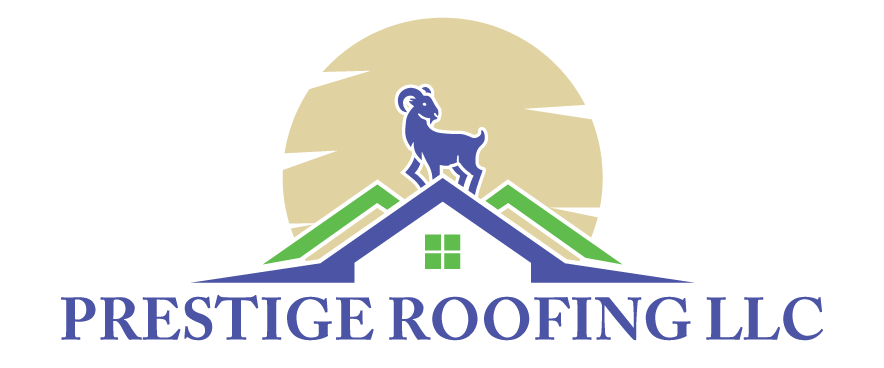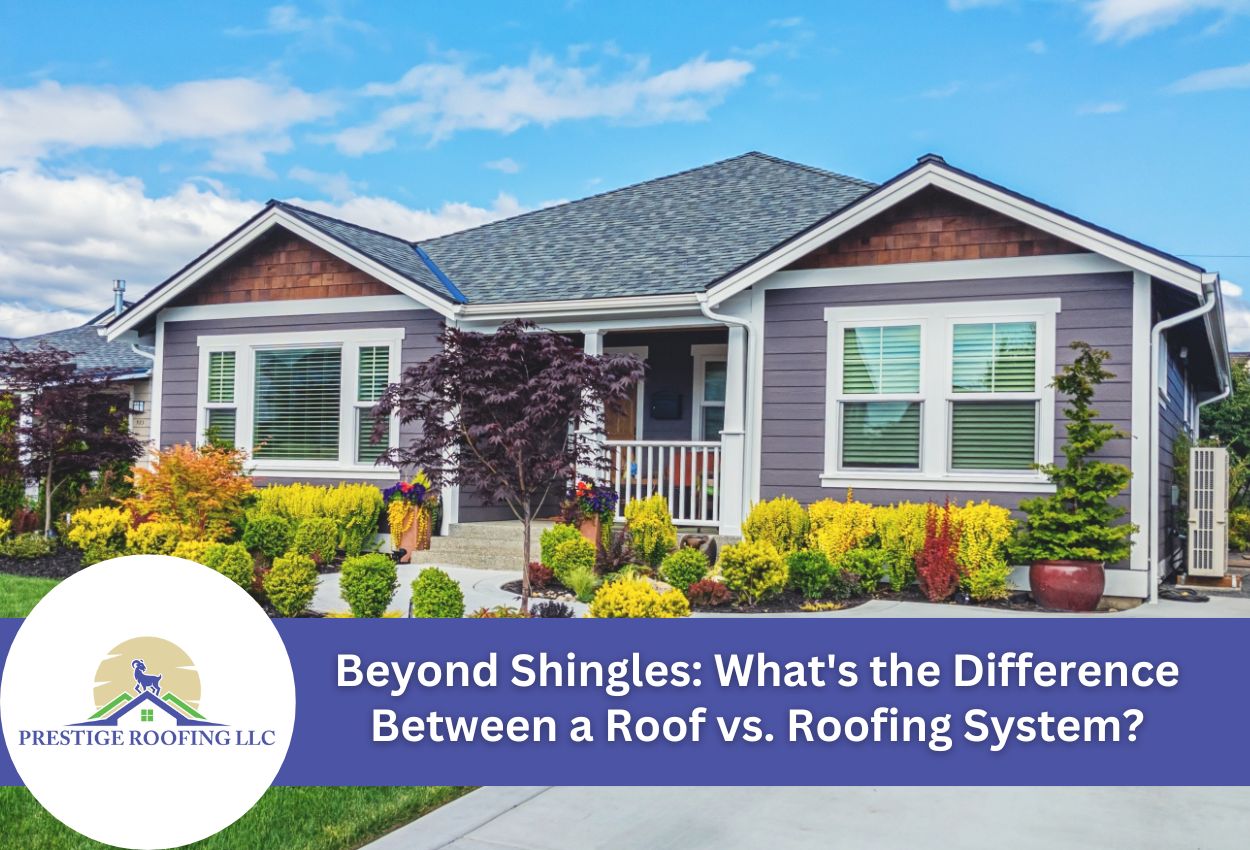When most Green Bay homeowners think about their roof, they often picture only the shingles visible from the street. However, there’s a critical distinction between a basic roof and a comprehensive roofing system that many Wisconsin homeowners don’t fully understand. This difference becomes especially important when extreme weather conditions sweep through our region throughout the year.
A roof typically refers to just the outer layer of materials, usually shingles, metal, or tiles, that cover the top of your home. In contrast, a roofing system encompasses multiple components working together to protect your home. This system includes underlayment, decking, ventilation, flashing, insulation, and water barriers in addition to the visible roofing materials.
This distinction matters significantly for Green Bay residents. Wisconsin’s weather, from snow in winter to storms in summer, needs more than just durable shingles. A properly designed and installed roofing system addresses moisture control, energy efficiency, structural integrity, and longevity in ways that simply replacing surface materials cannot.
For homeowners considering roof maintenance or replacement, recognizing the value of a complete roofing system can lead to better long-term decisions and stronger protection for what matters most: your home and everything inside it.
Components That Make Up a Complete Roofing System
A true roofing system is much more than just the shingles visible from your yard. For Green Bay homeowners, understanding the essential components working beneath the surface can make the difference between a roof that simply covers your home and one that truly protects it through Wisconsin’s challenging seasons.
The foundation of any quality roofing system starts with solid decking, typically made of plywood or OSB, which provides the structural base. Above this, a water-resistant underlayment creates a critical second line of defense against moisture infiltration. Flashing around chimneys, vents, skylights, and valleys prevents water from seeping into vulnerable areas where roofing planes meet or are interrupted.
Ventilation components, including ridge vents, soffit vents, and baffles, allow your roof to breathe properly, preventing damaging heat and moisture buildup that can lead to premature deterioration. Insulation works alongside ventilation to maintain energy efficiency, keeping warm air inside during harsh Wisconsin winters and hot air out during summer.
Each of these integrated roofing system elements contributes to the overall protection of your home. When professionally installed as a complete system, they work together to extend roof lifespan, improve energy efficiency, prevent ice dams common in our northern climate, and provide superior protection against the elements.
Roof Structure vs. Roofing Materials: Differences to Know
Understanding the relationship between your roof’s structure and its surface materials is essential for homeowners. Think of your roofing system as having two distinct parts: the structural framework beneath and the weather-resistant materials above.
As mentioned above, the structural framework includes trusses, rafters, and decking that form the foundational skeleton of your roof. These elements provide the critical support system that bears the weight of everything above, including heavy Green Bay snow loads. This framework must be engineered precisely to maintain structural integrity throughout decades of use.
In contrast, the external roofing materials, whether asphalt shingles, metal panels, or concrete tiles, serve as your home’s main weather barrier. These materials face direct exposure to sun, rain, snow, freeze-thaw cycles, and any other weather conditions.
The integration between these components determines your roof’s overall performance. Even the highest-quality shingles will fail prematurely if installed over compromised decking or with inadequate structural support. Similarly, a perfectly engineered truss system offers little protection if paired with substandard exterior materials that allow water leaks.
For Wisconsin homeowners, this relationship becomes even more significant during our seasonal transitions. A complete roofing system includes both structural elements and surface materials that work together to provide lasting protection against our region’s climate.
The Performance Advantages of an Integrated Roofing System
When all components of your roof work together as a unified system, Wisconsin homeowners experience protection that far exceeds what individual roofing parts can provide alone. An integrated roofing system creates multiple defense layers that collectively guard against Green Bay’s challenging weather.
During heavy rainstorms, properly integrated water barriers, underlayment, and flashing work to channel water away from vulnerable areas. This systematic approach eliminates the weak points where moisture typically infiltrates homes with basic roofing installations. For Wisconsin winters, a complete system provides superior thermal performance by combining ventilation with adequate insulation, preventing ice dams that commonly damage roofs in our region.
The long-term benefits of this approach extend beyond immediate weather protection. Homes with properly integrated roofing systems are generally protected for at least 20 years, which translates to significant savings over time. Additionally, the improved energy efficiency from a professionally installed and sealed roofing system often reduces heating and cooling costs for Green Bay area homes.
Perhaps most importantly, an integrated roofing system enhances your home’s overall value. When all components work together, your home benefits from improved durability, better energy performance, and enhanced curb appeal.
Roof Repair vs. Complete System Replacement: When to Choose Which Option
When faced with roofing issues, Green Bay homeowners often struggle with a critical decision: should you opt for targeted repairs or invest in a complete roofing system replacement? This choice impacts both your home’s protection and your financial planning.
For minor issues like a few damaged shingles or isolated leaks, repairs may be sufficient when the overall roofing system remains in good condition. Generally, if your roof is less than 15 years old and the damage affects less than 30% of the roof area, targeted repairs often make sense. Additionally, if your decking, underlayment, and ventilation components are still performing well, addressing only the compromised areas can provide several more years of reliable service.
However, certain warning signs indicate when a complete system replacement becomes necessary. These include widespread shingle deterioration, multiple leaks in different areas, sagging roof sections, or water damage in your attic. Wisconsin’s freeze-thaw cycles are hard on aging roofing systems, making complete replacement often more cost-effective than multiple repair cycles for roofs approaching the end of their functional lifespan.
When evaluating your options, consider that while repairs may cost less initially, a new roofing system offers substantial long-term advantages, like consistent protection, improved energy efficiency, enhanced home value, and the peace of mind that comes with a new warranty. For many Green Bay homeowners, the investment in a complete system pays off through decades of reliable performance.
How a Residential Roofing System Defends Against Wisconsin’s Climate
Wisconsin’s climate means roofing systems that can withstand extreme temperature fluctuations, heavy snow accumulation, and high humidity. Green Bay homeowners face specific challenges that require thoughtful roofing system design beyond what might work in milder regions.
Ice dam prevention is important for any Wisconsin roofing system. Attic insulation combined with intake and exhaust vents helps maintain consistent temperatures under the roof, preventing the freeze-thaw cycles that lead to ice dams. This system integration must include proper airflow patterns that keep attic temperatures consistent with outdoor conditions.
Ventilation requirements in our climate must balance winter moisture control with summer heat management. Wisconsin’s humid summers can trap moisture in poorly ventilated attics, leading to mold growth and wood deterioration. Effective roofing systems incorporate balanced intake and exhaust ventilation that works year-round.
Snow load capacity is another vital element of Wisconsin roofing systems. Our region regularly experiences heavy, wet snow accumulation that can place thousands of extra pounds on roofs. A complete roofing system addresses this through properly engineered trusses, high-quality decking, and strategic reinforcement at key stress points.
Regional adaptations for Wisconsin also include specialized water barriers designed for freeze-thaw resistance, impact-resistant materials that withstand hail and windblown debris, and flashing systems specifically engineered for our climate. When these elements work together as an integrated system, Green Bay homes receive protection specifically tailored to our regional weather conditions.
Selecting a Contractor Who Understands Complete Roof Replacement
Finding a roofing contractor who truly understands the difference between basic roof replacement and complete roofing system installation is essential for Green Bay homeowners. The right professional approaches your project with a comprehensive perspective rather than simply focusing on replacing shingles or other surface materials.
Look for contractors who hold certifications from major roofing material manufacturers. These credentials indicate specialized training in integrated system installation and access to extended warranty options that protect all system components. Experience also matters. Choose professionals with at least 5 to 10 years of specific experience installing complete roofing systems in your area in Wisconsin.
When interviewing potential contractors, ask how they calculate ventilation specific to your home’s design. Quality professionals will explain their process for determining airflow requirements rather than using one-size-fits-all solutions. Question them about their approach to ice dam prevention in Wisconsin homes and how they integrate water barriers with existing roof structures.
Request detailed explanations of how they handle the connection points between different parts of the roofing system. Their answers should demonstrate understanding of how underlayment, flashing, ventilation, and surface materials work together as an integrated unit. The best contractors will also explain their quality control processes for ensuring proper installation of each system component, recognizing that the overall performance depends on every element functioning correctly.
Choose Prestige Roofing LLC for Your Roofing System Needs in Green Bay
Understanding the difference between a basic roof and a comprehensive roofing system is crucial, especially in the challenging weather conditions of Green Bay. Whether you’re considering a new installation or assessing the state of your current roof, Prestige Roofing LLC is here to help.
Don’t settle for less when it comes to protecting your home. A complete roofing system from Prestige Roofing LLC not only enhances your home’s durability and energy efficiency but also its overall value. Ensure your home is equipped to handle everything from ice dams to summer humidity with a professionally integrated roofing system.
Ready to upgrade your home? Call Prestige Roofing LLC at (920) 791-0414 to discuss your roofing needs.

